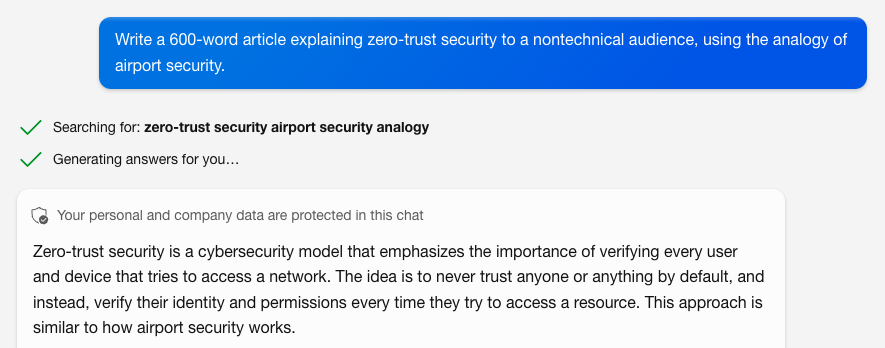What Is Prompt Engineering?
Prompt engineering is the practice of crafting and optimizing instructions, or prompts, to generative AI tools to achieve the desired results. It involves writing queries in a way that guides the AI towards generating relevant, accurate, and effective output. This can be as simple as specifying the format of the content to be created, or it can involve using specialized techniques or prompt patterns that are proven to work with generative AI.
The term “prompt engineering” may sound intimidating, but it uses many of the same skills that marketers and content strategists rely on in their day to day. Generative AI’s ability to process natural language puts those with thoughtful communication skills at an advantage. Content marketers are good at thinking through all the aspects of a piece of content – the audience, voice and tone, format, outline, and distribution channels – and identifying how they should shape the final output. In fact, AI prompting is a little like filling out a creative brief: It helps to be specific, set a clear objective, and include any relevant context to ensure optimal AI content creation.
Examples of Prompt Engineering for B2B Content
In its simplest form, prompt engineering can simply mean giving more specific instructions or including more information. For example, instead of saying “Write an article explaining zero-trust security,” you could tell AI to “Write a 600-word article explaining zero-trust security to a nontechnical audience, using the analogy of airport security.”

Another widespread example of prompt engineering involves telling the AI to act as a particular persona when it generates content. If you’re asking ChatGPT to explain zero-trust security, you can get vastly different results by having it act as a cybersecurity expert, a layperson, or a hippopotamus.
Finally, prompt engineering can entail using advanced techniques such as chain-of-thought prompting (asking the AI to work through its reasoning before answering a question) or few-shot prompting (providing examples and having the AI pick up on and continue the pattern). (You can learn about these and other prompt patterns in our blog post 5 Prompt Patterns for Effective AI Content Creation.)
Why Prompt Engineering Matters for B2B Marketing
Generative AI’s content creation ability is impressive, but it’s based on repeating patterns from its training data – essentially, generating an average of all the content it’s been trained on. That means a lot of the content it creates is bland and uninspired. And in the world of B2B content marketing, where you have only a short time to grab the reader’s attention, that’s not good enough.
Marketers in every industry are rushing to adopt generative AI, but it won’t help you if you can only use it to produce ineffective content. Basic prompt engineering ensures that the content you create with AI is on brand, tailored to your audience, and free of bias or errors. In a B2B context where trust is paramount and a plethora of decisionmakers each have specific informational needs, this is the bare minimum. Incorporating a deeper knowledge of AI prompting allows you to produce creative and unexpected output, giving you an edge over all the other content (both human- and AI-generated) that floods the internet.
Talk to Tendo
Need help with integrating generative AI into your content creation process? Tendo can help you craft prompts that get results. Contact us to learn more about our prompt engineering services.
« Back to Glossary Index